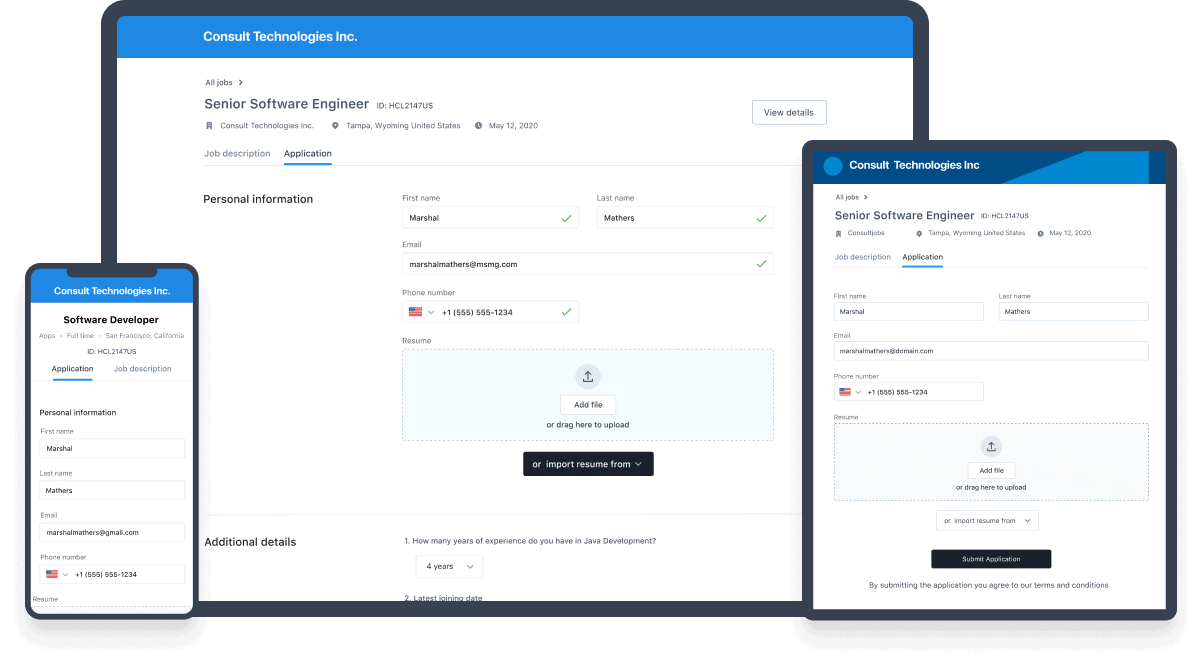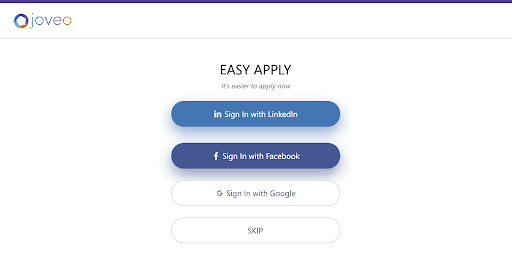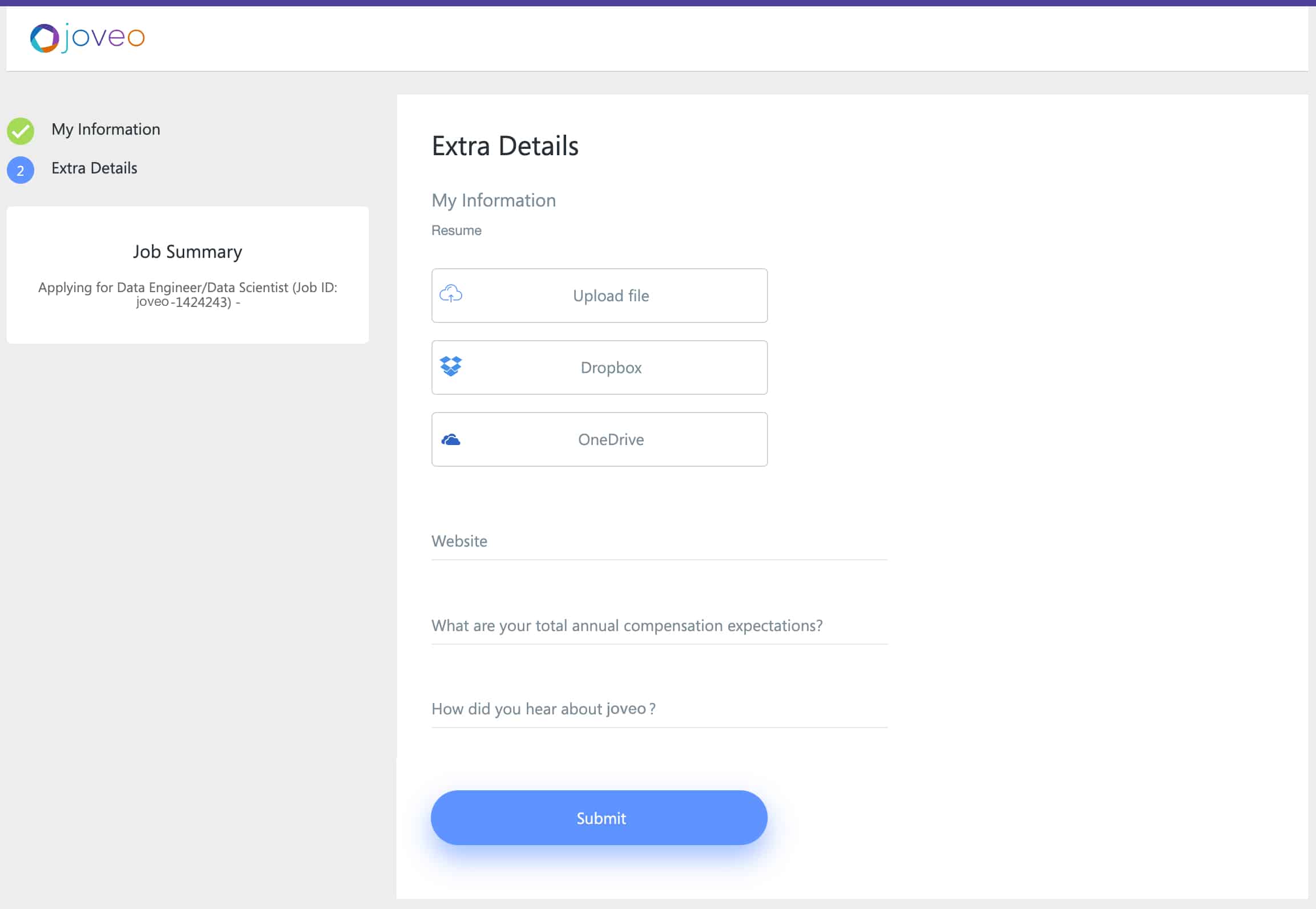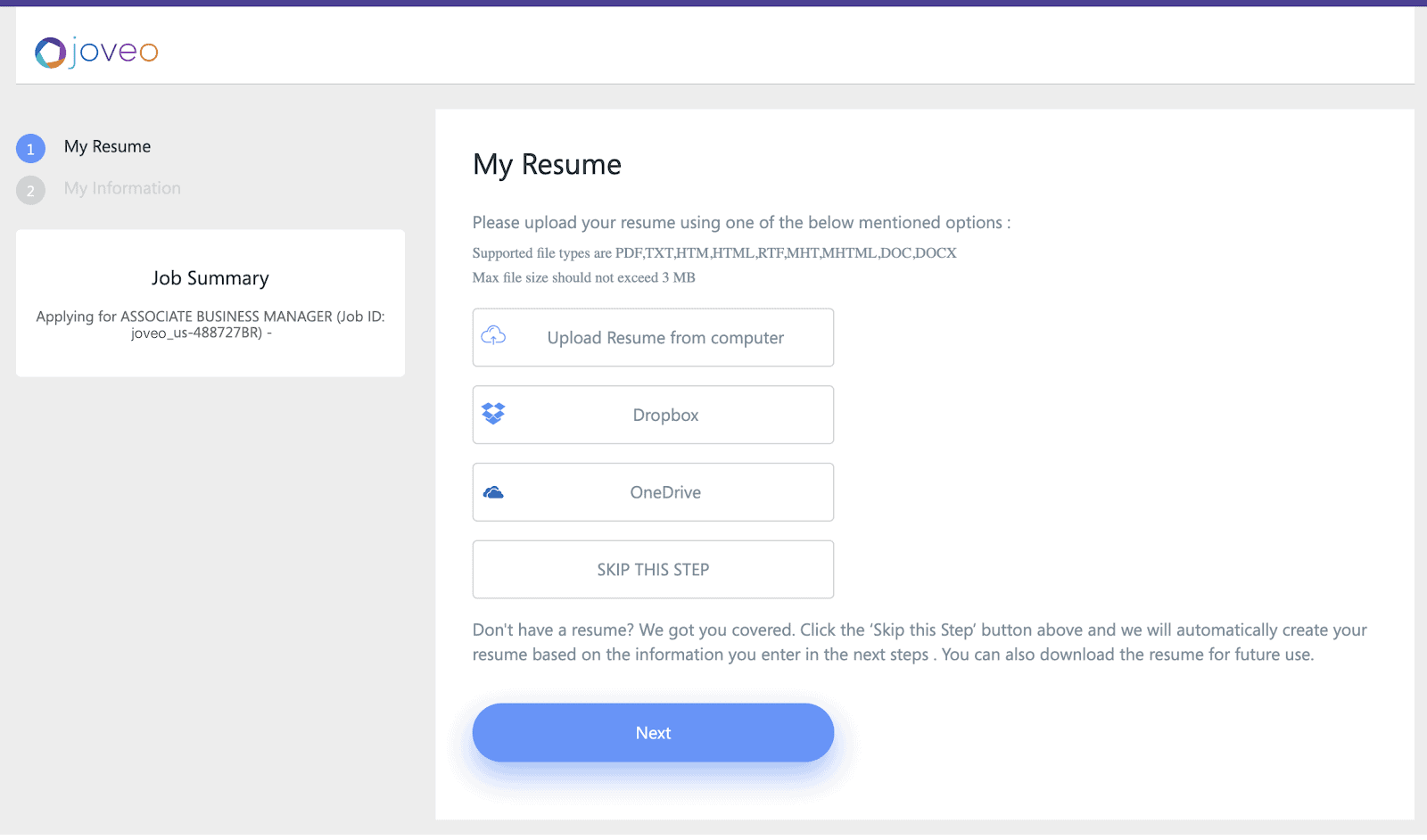It’s hard to overstate the criticality of candidate experience in talent acquisition. As the global economy recovers and employers start hiring in large volumes again, job seekers are spoilt for choice. As a recruiter, a great candidate experience is one of the most important things standing between you and hiring a high-quality job seeker. Crafting a system to deliver a great candidate experience involves many things – one of which is making your job application process as painless and seamless as possible.
Glassdoor estimates that 80% of job seekers abandon job applications midway. The reason for such a large drop-off rate, resulting in low click to apply (CTA) rates, is simple: most candidates find job applications either too long or complex – or both.
Recruitment marketers spend millions of dollars on recruitment advertising to attract relevant job seekers across a variety of online sources, with the goal of eventually converting them into hires. The job application is a critical piece of the process – acting as a bridge between the job seeker’s search and the employer’s ability to actually engage with the candidate.
Providing an optimized application process will ensure a larger portion of high-quality candidates you attract with your job ads actually convert to applicants (boosting your CTA), thereby enabling you hire more high-quality talent cost-effectively.
The following are 6 innovative ways you can optimize your job application process:
- Ensure a great application experience, regardless of the device type.

Kelton, a strategic consultancy firm, found that 86% of active job seekers begin their job search via their mobile devices. It’s essential that your application is user-friendly when it’s viewed on not just desktops, but also smartphones and tablets. Conventional job applications have been largely designed keeping desktop users in mind, and they fail to address some of the unique nuances of the mobile user.
For example, mandating resume uploads in the mobile-version of your application forms is a terrible idea. Candidates rarely have their resumes stored on their smartphones, and it would be highly inconvenient for them to retrieve their resumes from either the cloud or other devices in the middle of filling out an application. This is sure to lead to higher abandonment rates. A better approach would be to keep the resume upload as optional, or do away with it entirely.[/vc_column_text][vc_empty_space][vc_column_text el_class=”drop-imgg”]
- Provide easier account registration and login options.

Most job applications are hosted on the employer’s Applicant Tracking System (ATS), which often requires candidates to first register or sign in on the platform before being presented with the form. This extra and quite unnecessary step is likely to trigger additional drop-offs. A more user-friendly approach is to eliminate the ATS registration completely from your process and allow candidates to “Continue as Guest,” or to provide social login options (via Google, Facebook, or LinkedIn). The latter approach has the added advantage of allowing you to pre-fill some of the candidate’s personal details in the form, such as their name, email address, phone number, location, etc.
This would result in much higher application completion rates, as candidates are not forced through an annoying account creation process as well as form fields that capture information that was already provided while creating the account.
Simplify your app experience and get 360* visibility into the candidate journey with MOJO Apply.Double Your Click-to-Apply Conversions and Improve Candidate Satisfaction 30%+
- Eliminate non-mandatory fields to reduce application length.

In the conventional approach, recruiters believed that long, detailed applications help screen out less qualified or low-intent candidates. While this mindset still has takers today, in reality, it’s the opposite that often happens. Your chances of making highly qualified candidates jump through your requisite hoops are low. The shorter your form, the more applicant-friendly it is. So it’s time to take a good, hard look at your application form and decide on which questions are just “nice to have” – and eliminate them. This will immediately shrink your application length and limit the number of screens for your candidates to navigate through. The idea is to limit your questions to eliciting only the information you need upfront to decide whether or not to move your candidate to the next stage.
There’s also the option of presenting the eliminated questions AFTER the candidate submits the application, under a separate “Add extra details” section. This would help you obtain most of the information you care about, while not deviating from the core purpose of the application form – converting candidates to applicants.
- Adopt resume parsing technologies to auto-populate form fields.

Candidates hate filling out details on the application form that are already present in their resume. This is true for a couple of reasons: a) it just feels like a waste of time to manually input information that has already been shared in the resume, and b) sections like the employment history are usually very lengthy and laborious to fill in.
To address these issues, resume parsing technologies have been developed that can, to a high degree of accuracy, scan for information in the uploaded resume and auto-populate relevant fields in the application form – all in a matter of seconds. At worst, once this is done, the candidate only has to verify the auto-populated information and make a few edits, if there are minor errors. This approach can dramatically improve the candidate experience and shave several minutes off the time needed to complete applications.
On a separate but partially related note, if the candidate does not have a resume handy, it’s possible to provide an option to auto-create a resume (if the “resume upload” requirement is mandatory), based on the information manually entered by the candidate in the application form.
- Support applications to multiple jobs simultaneously.
Candidates that complete a job application have invested a significant amount of time in researching your job and filling out the application form – no matter how short the form is. It’s important that you maximize their return for the time and effort invested. If you find that an applicant is qualified for more than one vacancy, recommend the other relevant vacancies to the applicant at the end of the form, and make it convenient for them to apply to them all in one go. The relevance of the candidate for other vacancies should be determined on the fly, based on data that the candidate has input while filling out the application. As a result, they could end up applying for several jobs in the time it takes to fill just one application form. This significantly increases the likelihood of converting an applicant into a hire, while at the same time immensely improving the candidate experience by not insisting on manual filling of separate applications.
Including this feature in your job applications also helps with another scenario: sometimes, job seekers apply for jobs they’re not relevant for, while skipping over open positions where they have a higher likelihood of getting hired. With the right data, you can show them the right jobs with a greater probability of conversion.
- Re-engage and retarget candidates that drop off.
Despite all of your best efforts in optimizing your job application process, some candidates are still invariably going to drop off. However, this isn’t a dead end. There are still many things you can do to bring them back to your application process.
Retargeting is a means to reach and re-engage dropped-off candidates with relevant and personalized ads on the World Wide Web cost-effectively. Also, you could use email as a channel to re-engage with these candidates – reminding them to continue filling out an abandoned application form or even sending them alerts to other similar and relevant open positions.
As a result of targeting candidates already familiar with your brand and open positions, you stand to significantly improve your conversion rates.
—
MOJOTM Apply, part of Joveo’s advanced programmatic job advertising platform, enables you to implement all of the best practices listed above, thereby simplifying and optimizing your job application process to deliver an exceptional candidate experience. On average, our customers have witnessed a 40% increase in CTA rates on adopting MOJOTM Apply to optimize their job application process.
To learn more about the technology, and how we can do the same for you, reach out to us today!















